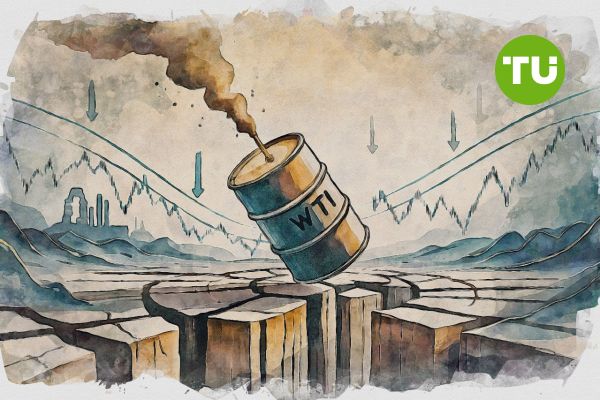WTI crude oil price stalls near $74 as markets weigh Iran response to U.S. strikes
 WTI crude oil price fluctuates near $74 amid fears of Middle East supply disruption
WTI crude oil price fluctuates near $74 amid fears of Middle East supply disruption
WTI crude oil prices jumped early Monday, climbing as much as 2.7% before retreating to $73.90 per barrel, as traders reacted to escalating U.S.-Iran tensions. The pullback came after the U.S. launched strikes on Iranian nuclear facilities over the weekend, prompting immediate concern that Tehran could retaliate by blocking the Strait of Hormuz—a critical chokepoint through which roughly 20% of the world’s crude oil transits.
Key highlights
- WTI crude surged 2.7% before paring gains to trade around $73.90 amid heightened Middle East tensions
- Iran’s parliament voted to close Strait of Hormuz, raising fears over disruption of 20% of global oil flow
- Technical rejection at $76 supply zone keeps market on edge as price hovers near key $72.50 support
Iran’s parliament reportedly voted to close the Strait in response to U.S. military action, although the final decision rests with its Supreme National Security Council. Market anxiety remains elevated as President Trump’s administration considers additional military steps, raising the stakes for a wider regional conflict and potential supply disruption.
Technical structure shows indecision as price faces resistance
The rally to just below $76 was swiftly rejected, with technical charts highlighting a short-term loss of momentum. On the 4-hour chart, price is clinging to the 20-EMA near $73.56, while Bollinger Bands are expanding slightly, reflecting renewed volatility. Price remains trapped between key levels—facing rejection below the $76.50 resistance and fragile support near $72.50.

USOIL price forecast (Source: TradingView)
Breaks below recent support could drag WTI crude toward $71 and eventually $68, coinciding with previous demand zones. Conversely, a decisive move above $75.10 could revive bullish momentum toward $77.80. The current structure suggests a market in search of conviction amid intensifying geopolitical uncertainty.
As previously discussed, WTI crude oil remains highly reactive to geopolitical events, particularly in the Middle East. While broader price action maintains a bullish tilt on the higher timeframes, the current environment favors sharp volatility and caution as traders await clarity on Iran’s response and possible U.S. policy shifts.













































































































































